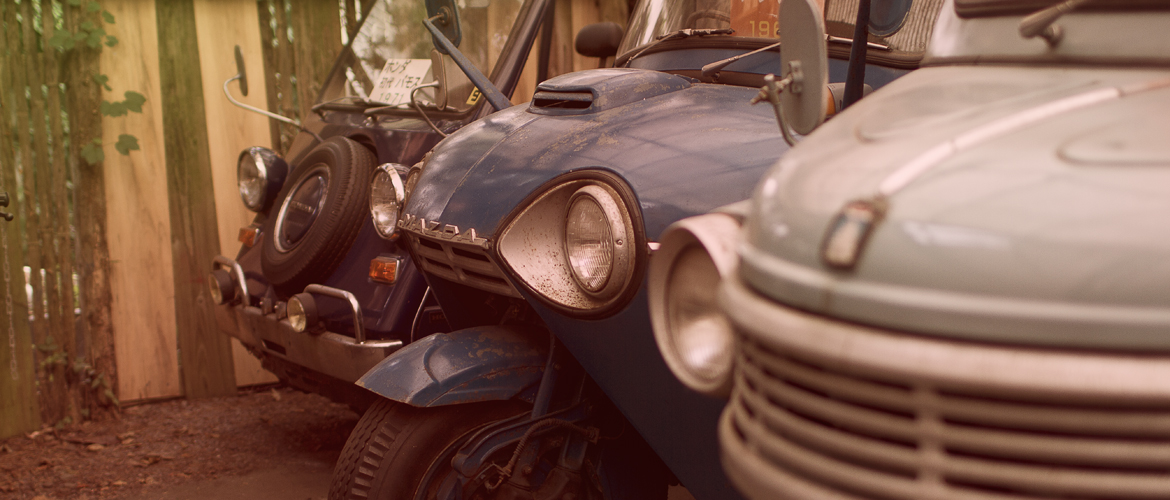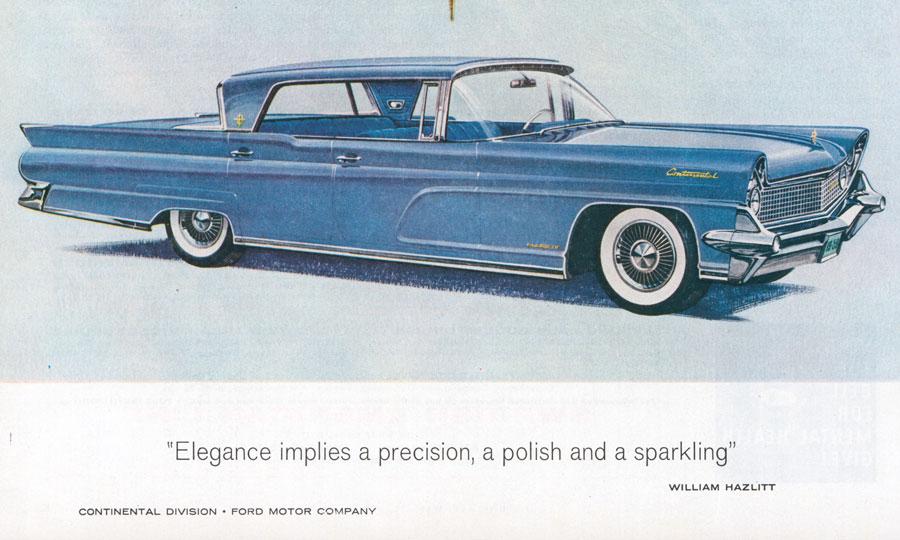Some people collect automotive products with a set purpose in mind. Like Magnus Walker and his desire to have one model of the Porsche 911 for every year produced. Others, like Mizusawa-san of the Kyushu Automobile Museum, are a little more, shall we say, higgledy piggledy, buying up things that catch their eye if and when they become available.

There’s nothing wrong with this approach, of course, because it leads to eclectic and highly interesting collections like the one I encountered when last in Japan. However, it does mean you have to approach it with an open mind, taking in whatever happens to be around the corner, because to a large degree, you can’t tell what’s going to be next.
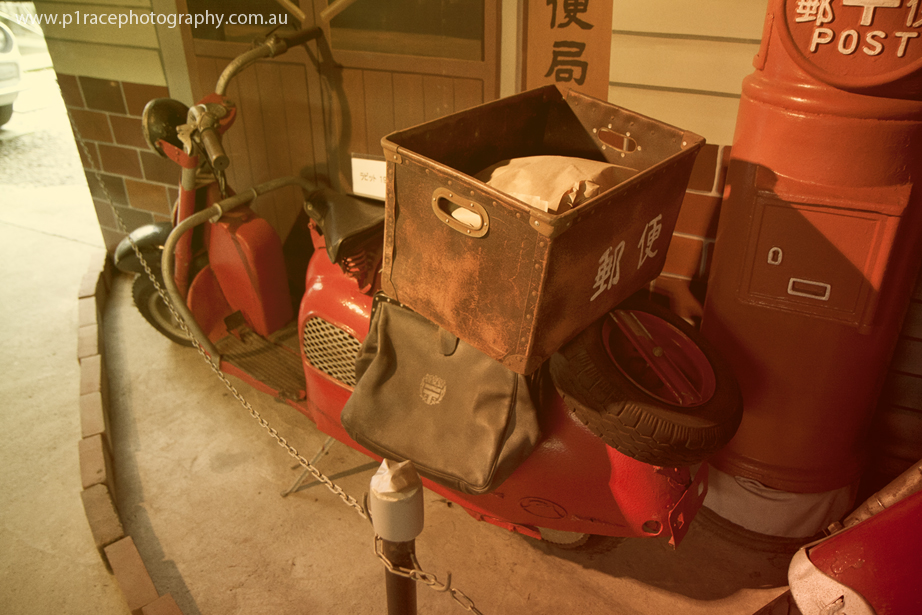
My interest in the Kyushu Automobile Museum was piqued prior to departure by the website. Looking for all the world like it just emerged from GeoCities in the 90s (complete with little animated GIFs and lurid colours), this was clearly no ordinary museum. Tucked away in a corner of the popular tourist town of Yufuin, you’d miss it if were you more focused on the numerous shops trying to lure in the thousands who come each day to check out the town and its famous hot springs.
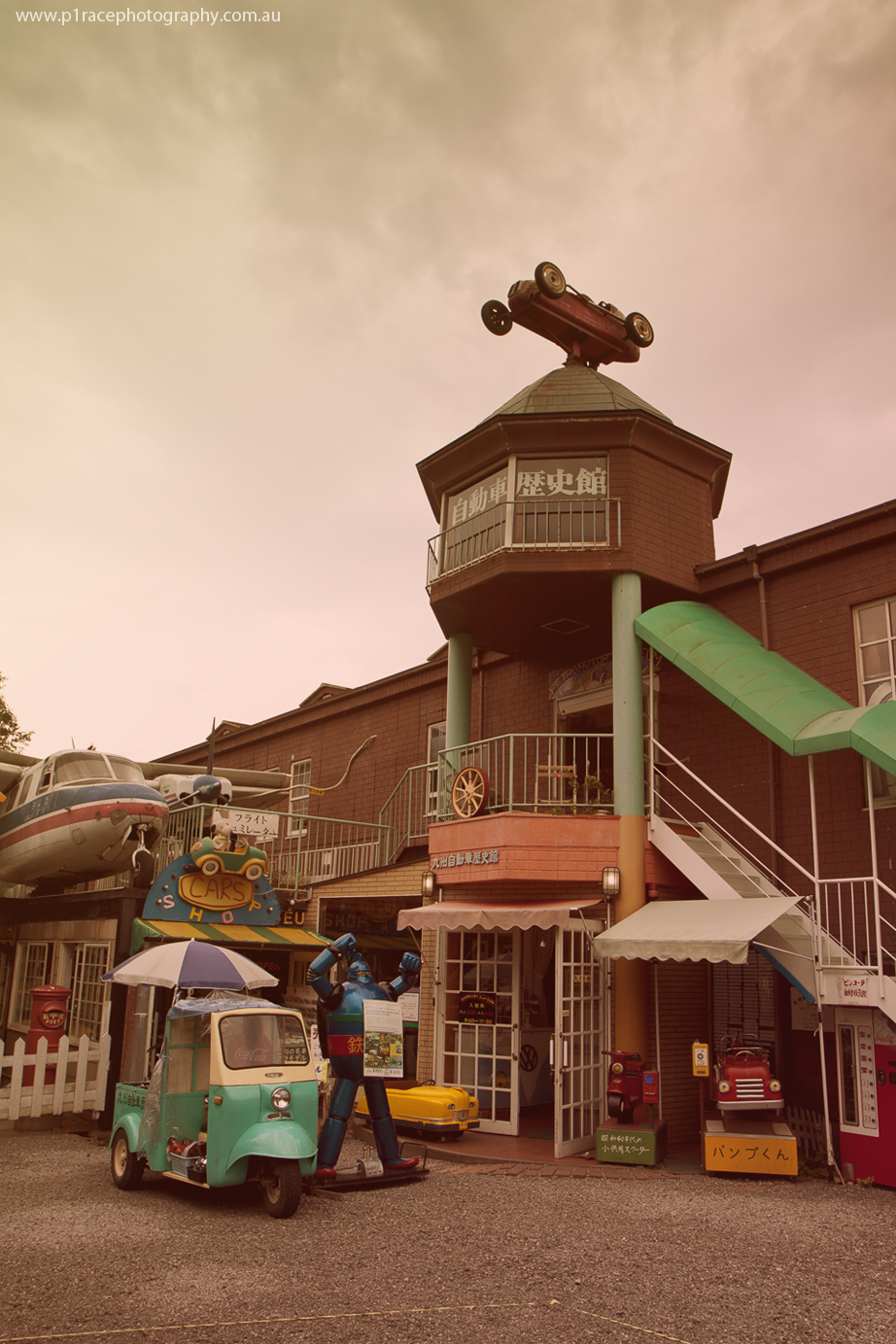
Of course, if you kept an eye out, it’d be hard to miss. You can’t go past a building that looks more like it belongs in a Studio Ghibli film than a traditional museum, complete with original Daihatsu Midget tricycle and Tetsujin 28-Gou statue out front, twin-engined aircraft mounted on the second-storey balcony and a pedal car on top of the main spire. It’s amazing.
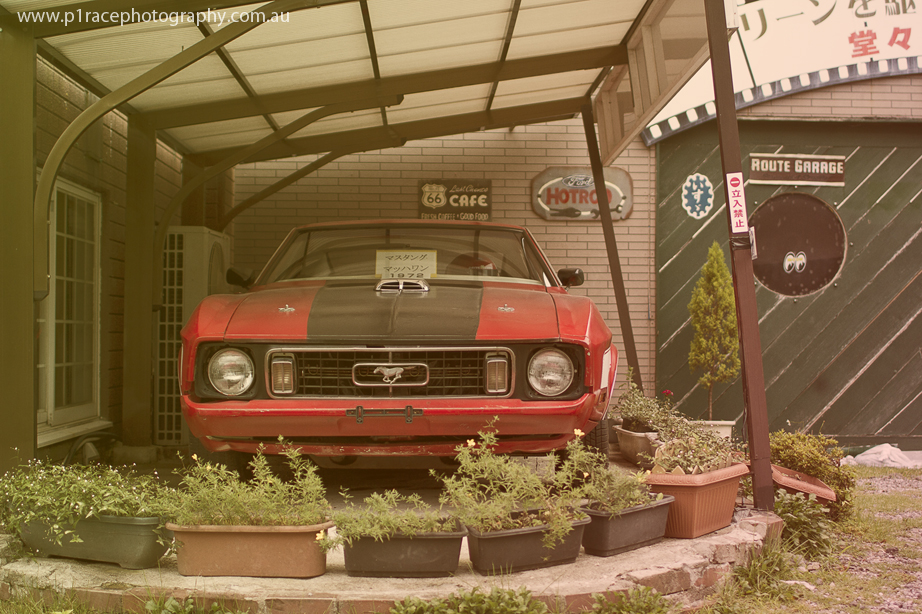
And let’s not forget the 1970 Mustang Mach 1, just sitting under a carport, almost completely exposed to the elements and covered in dust …
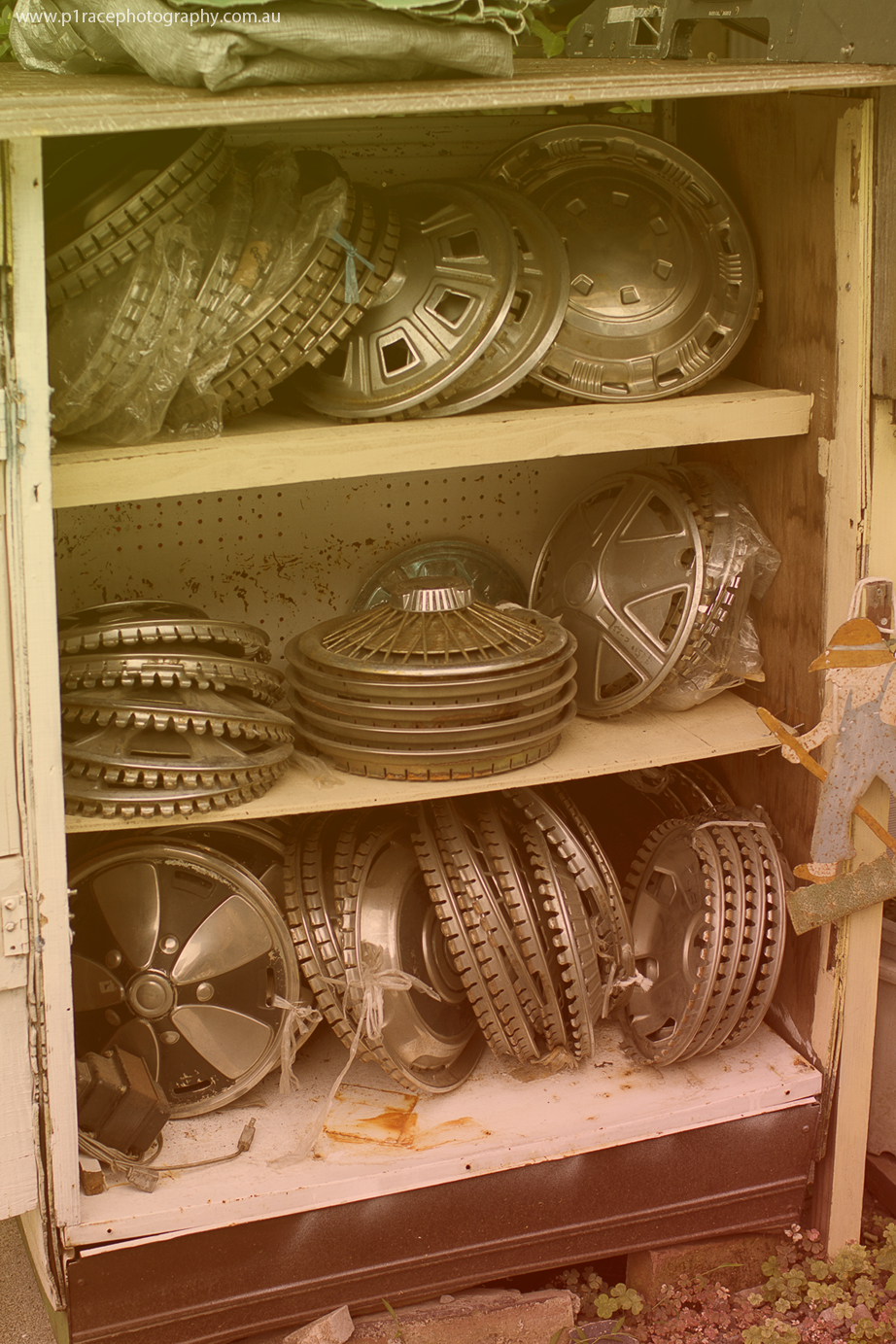
… or the collection of classic Japanese hubcaps sitting in a dilapidated bookshelf alongside, again with no protection other than the furniture they sat in.
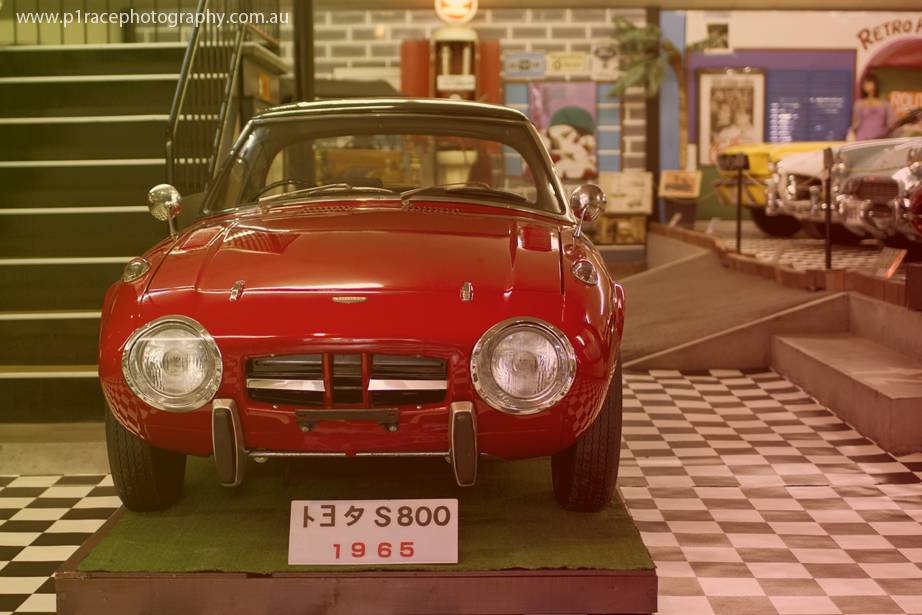
Inside, it’s like the owner took every single retro interior theme available and just mashed them together, hoping to recreate the ambience of the eras the cars belong to. Sitting on a little dais above the chequerboard vinyl, you’re greeted first by this charming little S800 …
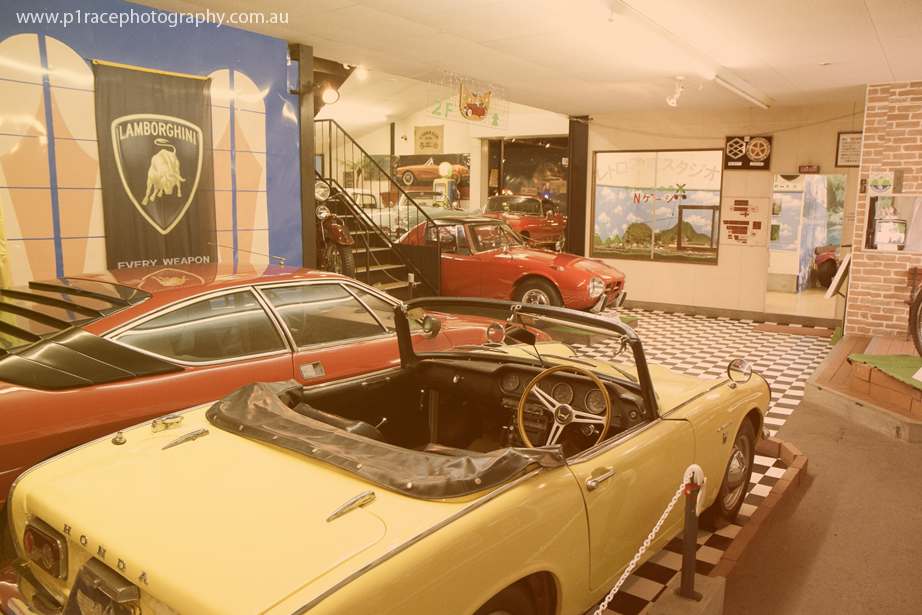
… which sits to the right of a Lamborghini Urraco and a Honda S800 in the entrance hall. You couldn’t get two sports cars more different in execution if you tried, but there they are, best buddies.
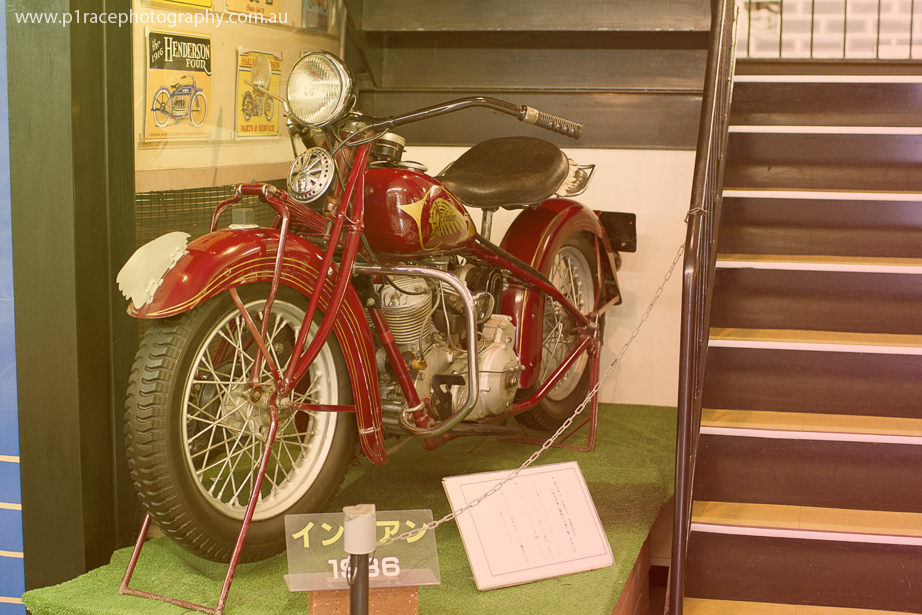
Next to them, you have a 1936 Indian, which sits in the alcove next to the stairs.
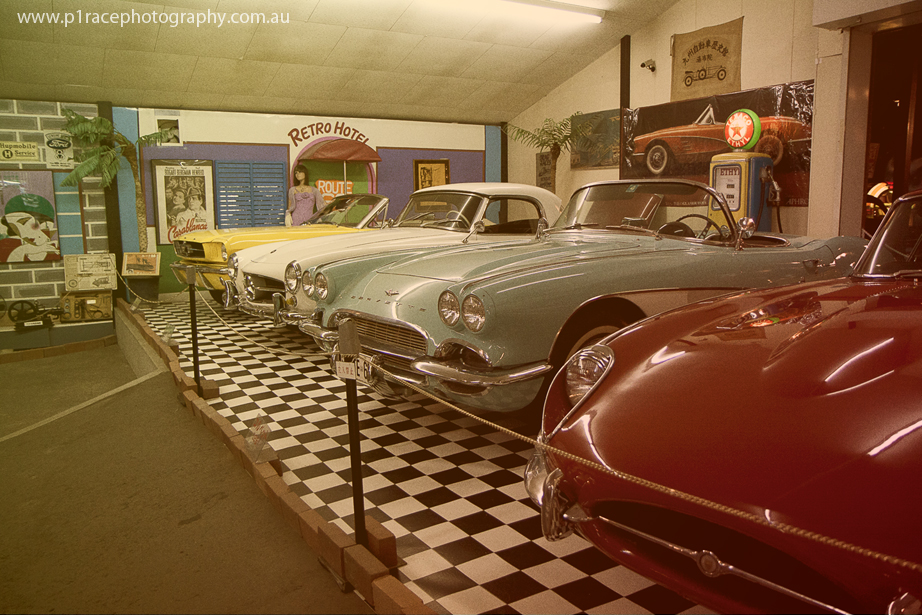
Exploring further, you see a line-up of classic sports cars, with one of two E-Types on display (a coupe), a C1 convertible, 190SL and Mustang convertible. Note they all sit on the forecourt of the ‘Retro Hotel’, complete with period gas pump in the background.
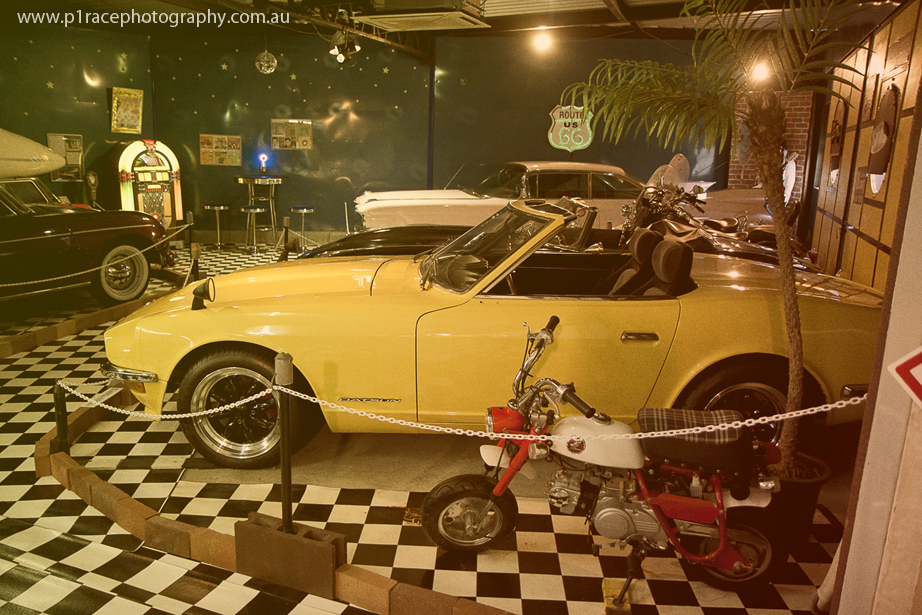
Across to the right, you jump into what can only be seen as a classic American diner, only with cars instead of tables. One of these is truly unique; a custom S30 speedster (it has no roof at all), which sits in front of the collection’s second E-Type (this time a roadster) and an Elvis-replica pink Cadillac. See what I mean about higgledy piggledy?
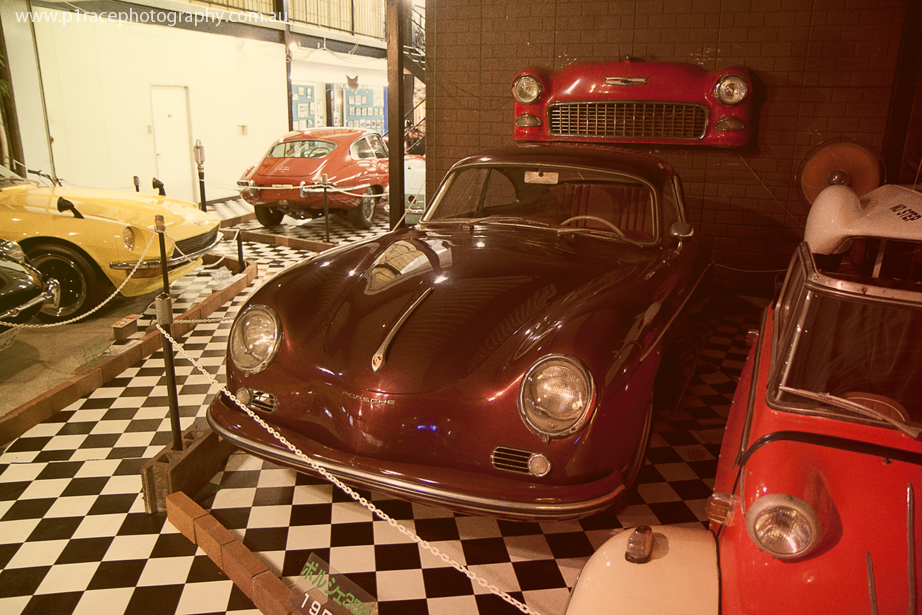
I’m sure many of you have also spotted the gorgeous 356A in the earlier picture, so here’s another look. Has there ever been a more flowing, gorgeous set of curves?
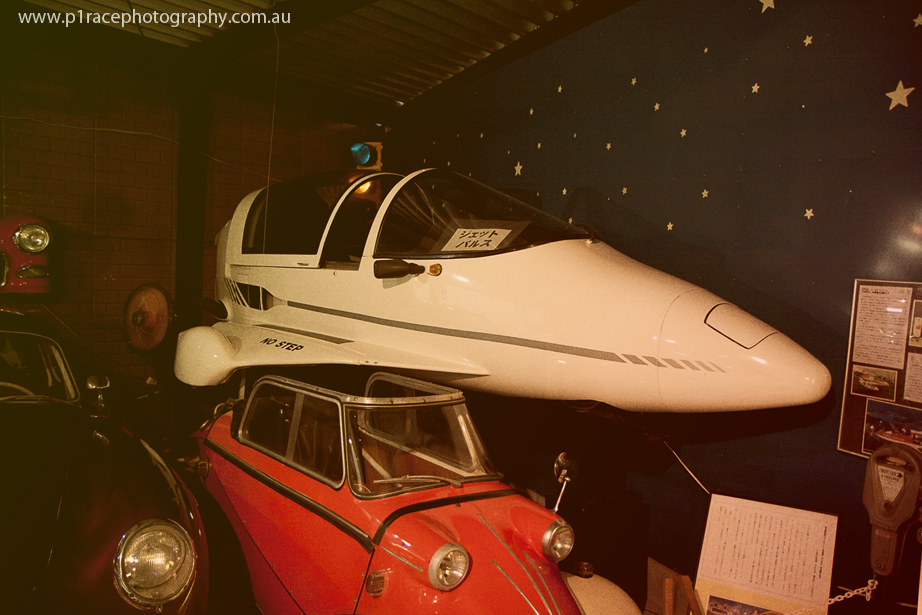
Of course, the section wouldn’t be complete without a Messerschmitt bubble car (right?) and a remarkable piece of engineering known as the Jet Pulse. As far as I could gather, this was actually an early example of a flying car, complete with bolt-on wings that took it from being a sort of motorbike with stabilisers to a full-on jet.
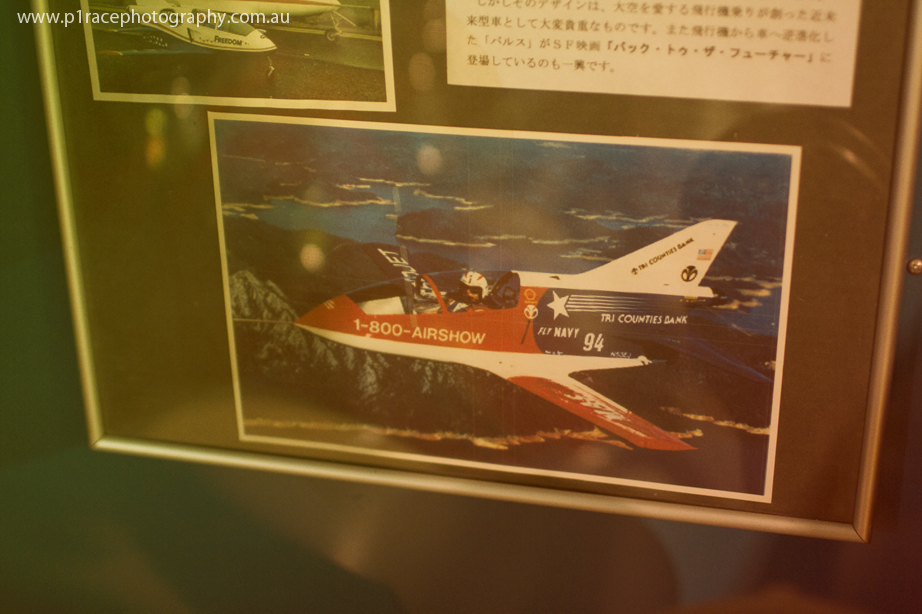
There’s actually evidence of it flying at an air show in the US, too, as well as a bit of history in Japanese that explains these basic shapes were actually used in sci-fi films like Back to The Future, Lawnmower Man and more. Perhaps our US readers could enlighten us on this particular craft’s story.
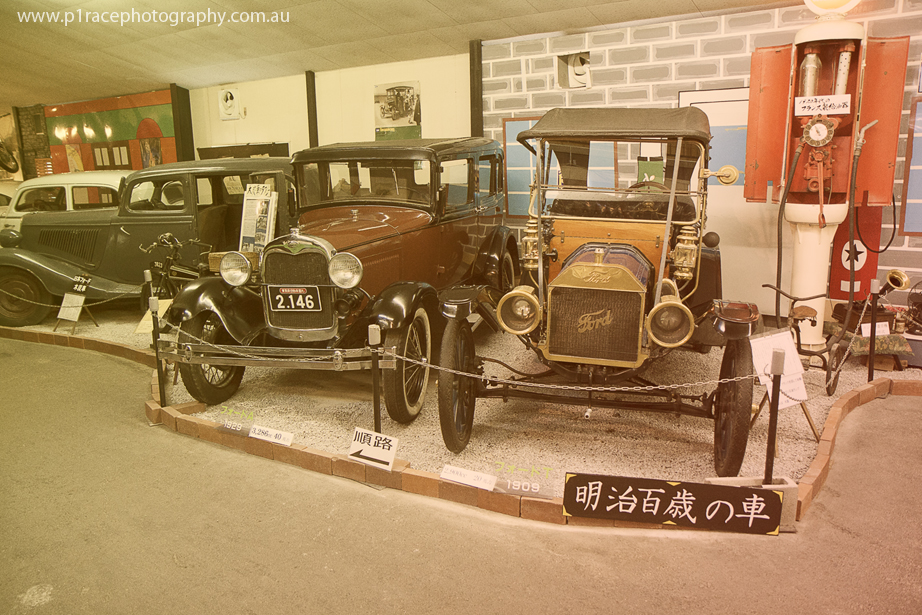
Moving on, Mizusawa-san led me to the Meiji-period section, which included some true rarities and curios. Not these two Fords, as such, which are still remarkable to see in a small Japanese country town …
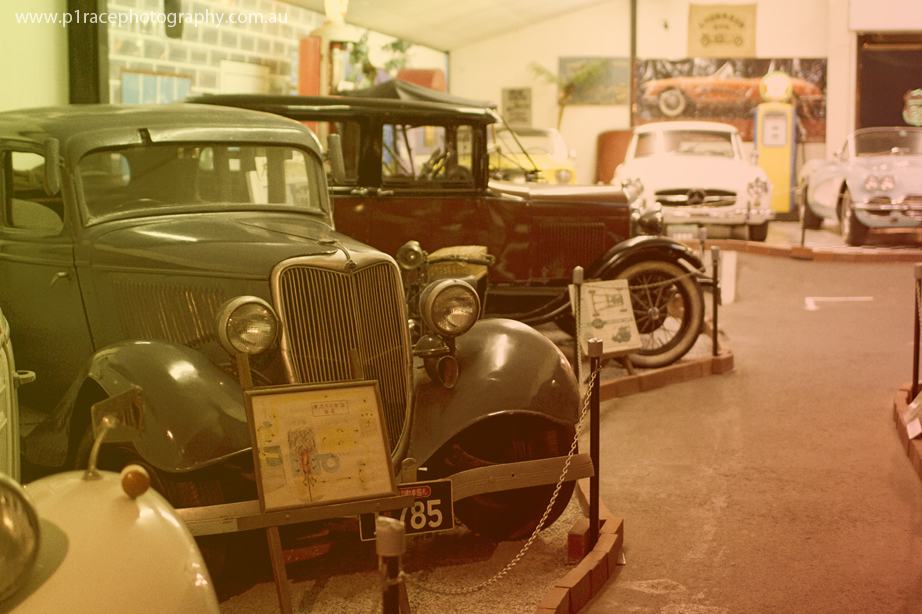
… but more things like this 1934 Japan Ford (yes there was such a thing) charcoal gas-powered taxi. It’s hard to imagine these days, but back when people really were experimenting with all sorts of propulsion methods, vehicles like this appeared.
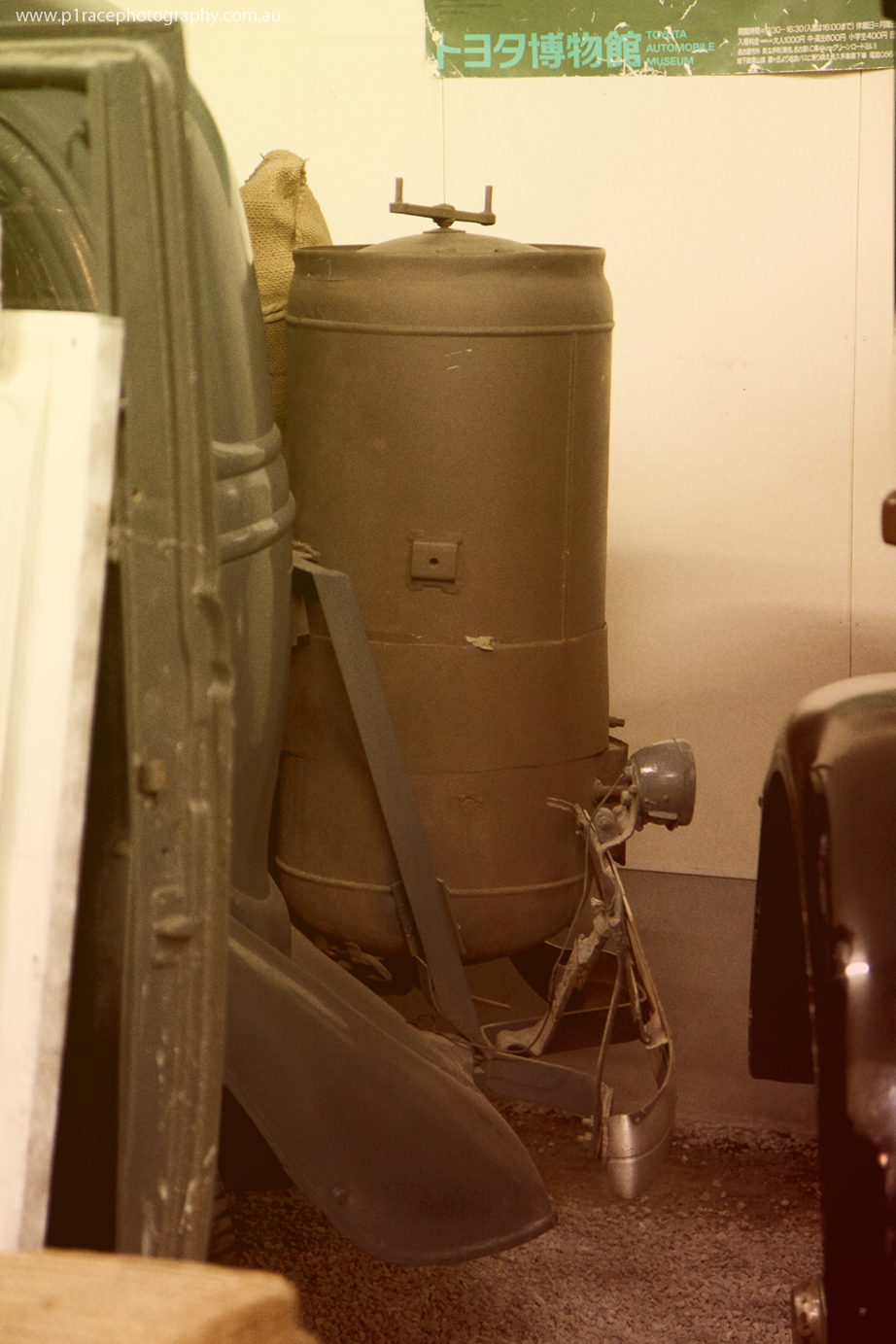
Basically, you put 30kg of charcoal into this tank, let it heat up and release gas, which drove the converted internal combustion engine, then drove a remarkable 200km or so before you needed to refuel. For such a large and heavy vehicle, I’d say that’s pretty impressive fuel economy.
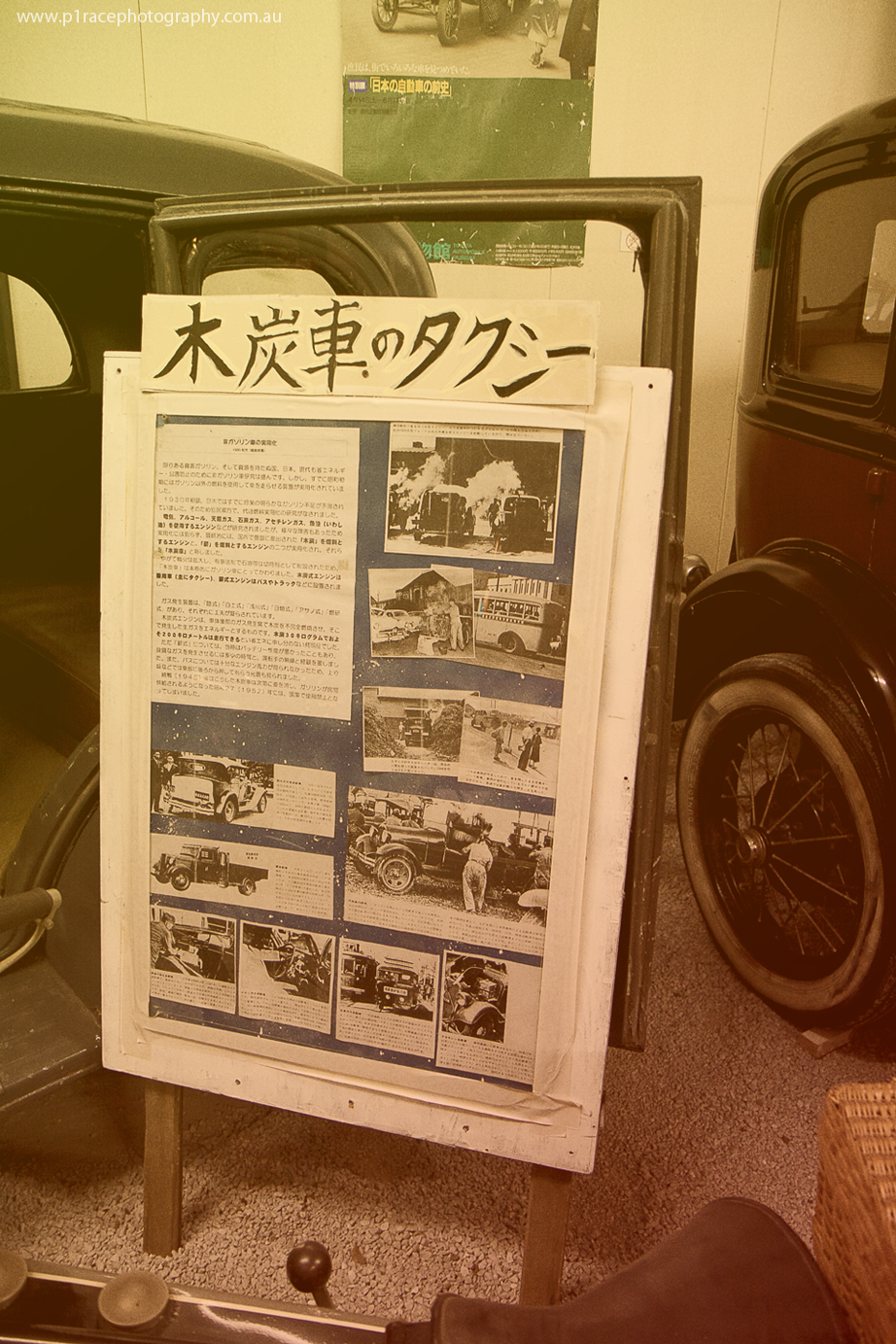
Here are some photos of the car in action.
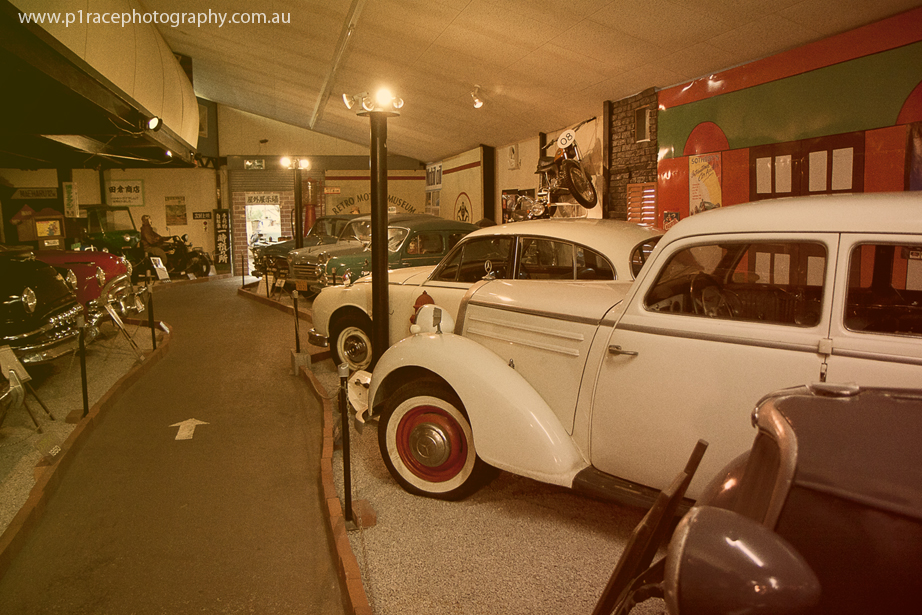
Just down from the charcoal car, you had mainly American iron on one side, and European and Japanese classics on the other.
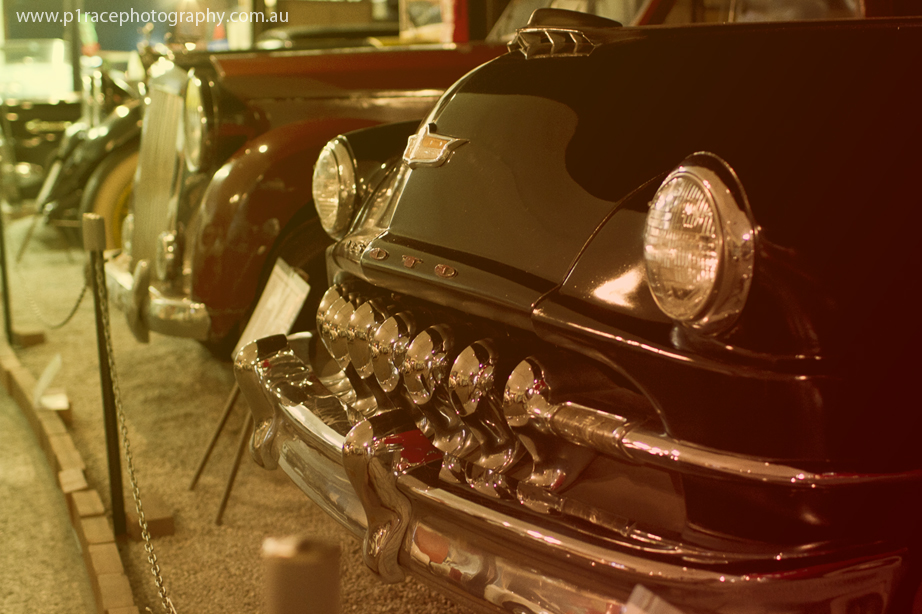
For a relatively small country museum, I was impressed to see this lovely 1952 DeSoto …
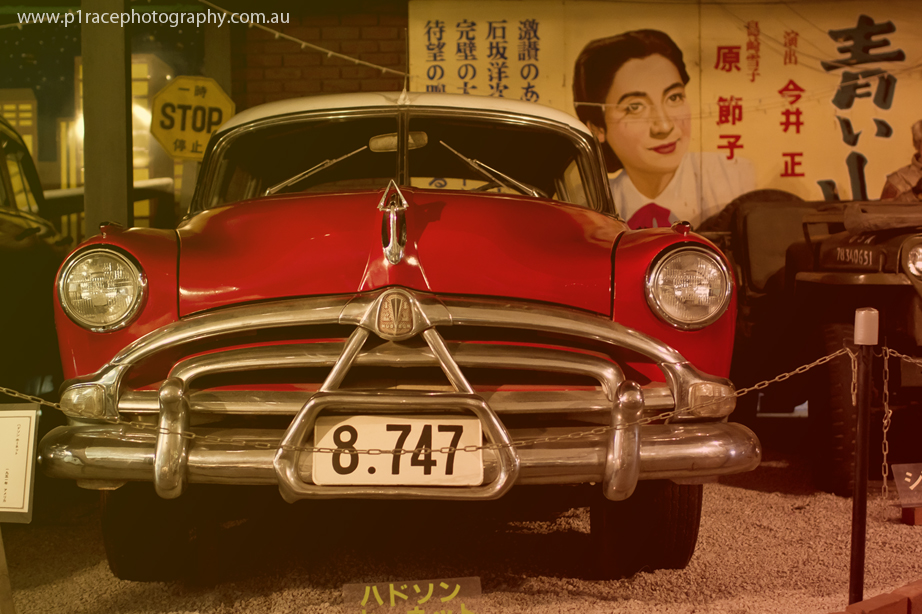
… as well as this bright red Hudson Hornet. I find it funny that while it may have been well-known amongst car guys prior to the film, it was only thanks to Disney’s Cars that much of the world now knows about this machine.
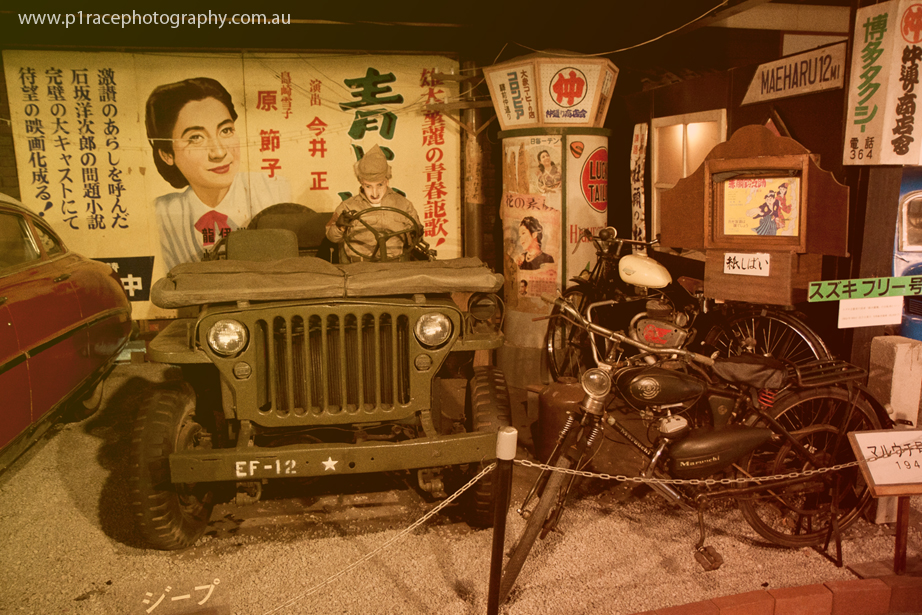
You’ll have probably spotted this Willys Jeep next to the Hornet, too, although I think more than the Jeep, I loved the beautiful Meiji period advertising material and knick-knacks surrounding it. It’s a great way to evoke the atmosphere of the times.
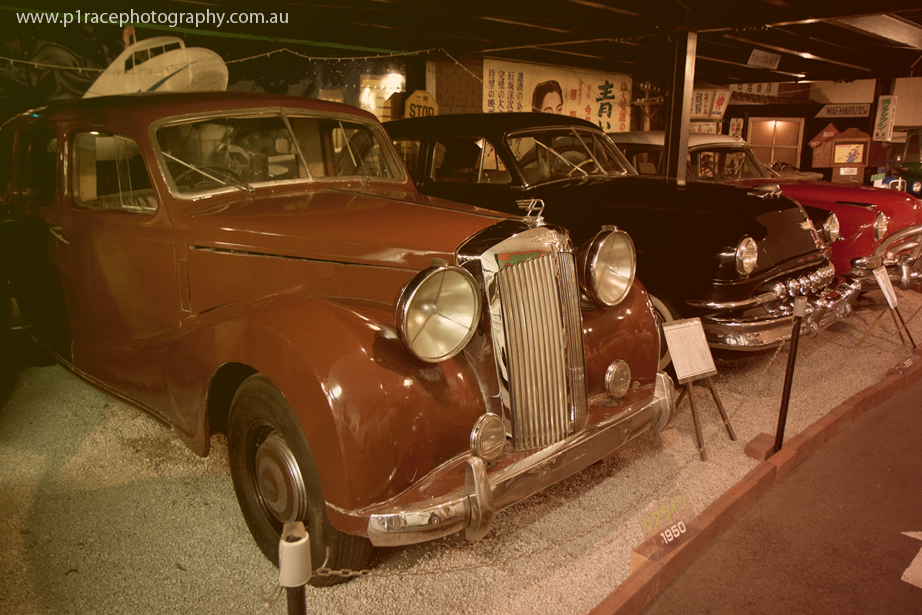
As stated just before, the ‘US’ side wasn’t all Americana. One example was this now rather rare 1950 Austin Sheerline. For those who don’t know, the Sheerline was kind of the Volkswagen Phaeton of its time, designed to give the averagely wealthy (as opposed to the fabulously rich) a chance at owning something akin to a Rolls Royce. Priced at two-thirds the money of a contemporary Rolls (but still several times the price of a small Austin), Sheerlines came mostly with 4-litre sixes and only 8,000 were made, hence the rarity today.
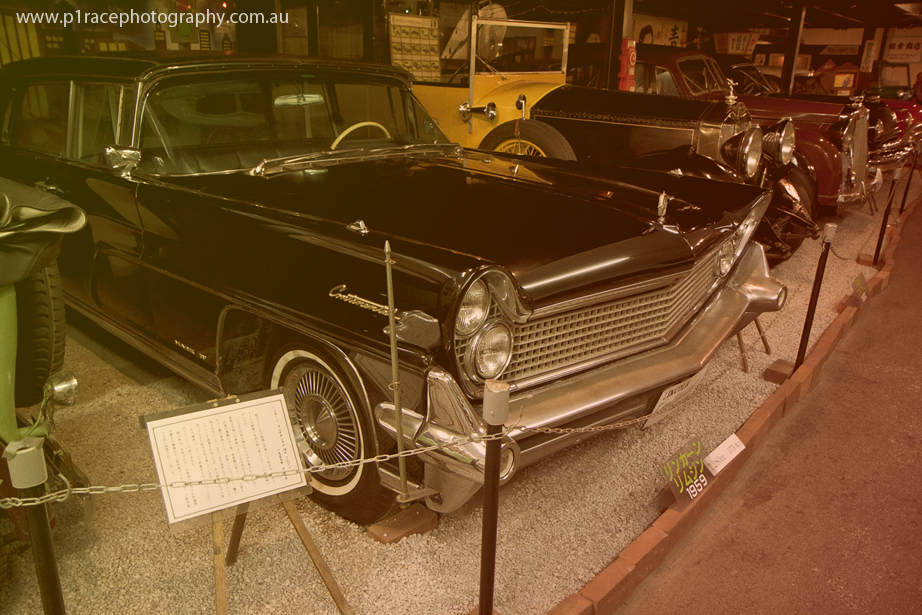
Speaking of Rollers, Mizusawa-san also managed to get his hands on a 1930 Phantom, which sat proudly next to a 1959 Lincoln Continental limousine.
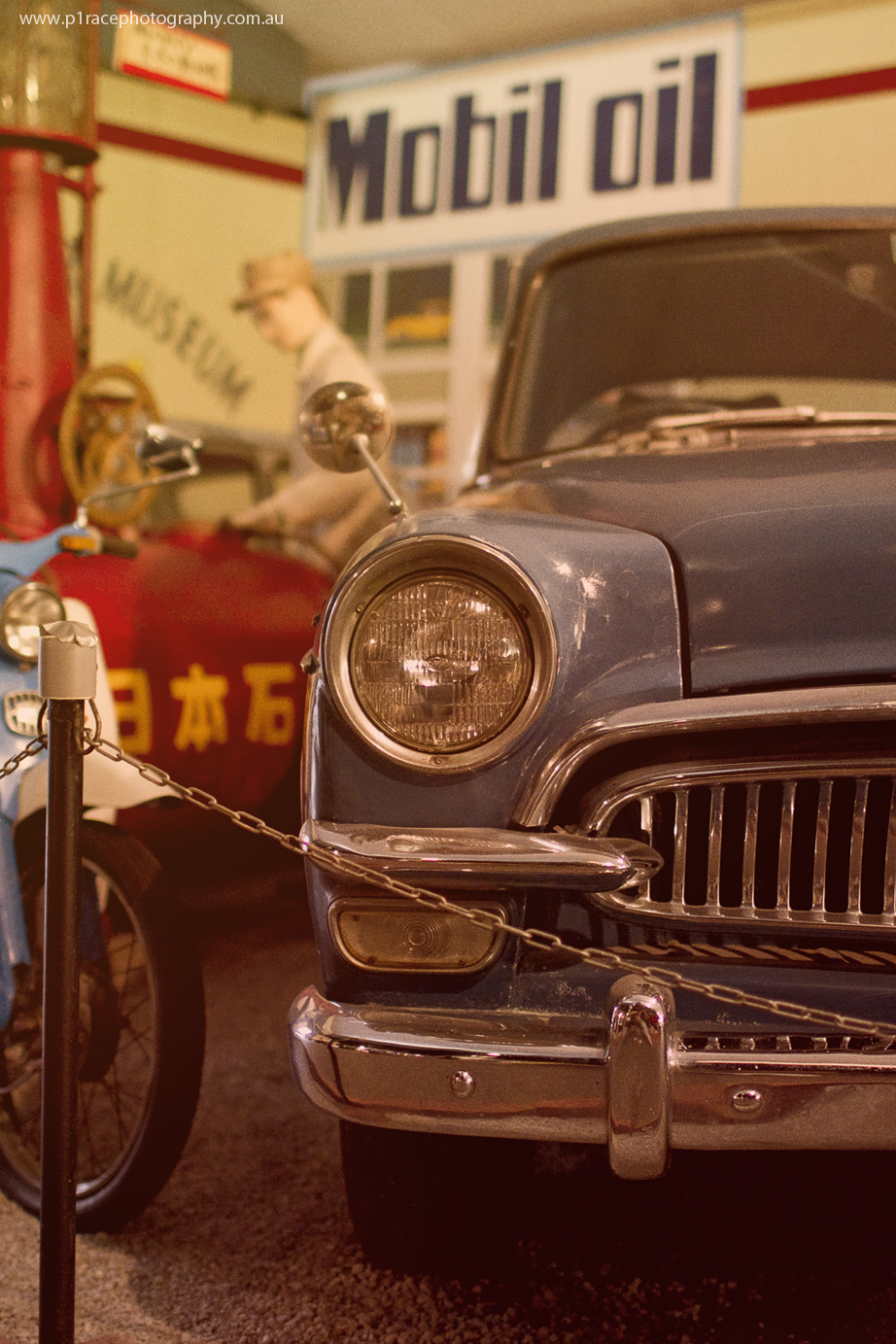
Of all the cars on the mostly European side, the Japanese one caught my eye the most, though, if only because it’s such a recognisable nameplate today. Behold the first generation 1958 Toyota Crown, then called the Toyopet Crown, powered by a mighty 1.5 litre engine putting out 48hp. Bear in mind this car was priced at just over 1 million Yen at the time, making it the equivalent of around $170,000 in today’s money, measuring off wage increases over time. Makes today’s Crown seem like excellent value!

If we’re talking Japanese automotive history, though, no section opened my eyes more than the next. Outside, only covered by a plastic carport, lay several examples of Japan’s early automotive products, such as trikes from Mazda and Daihatsu, a few bikes from Honda …
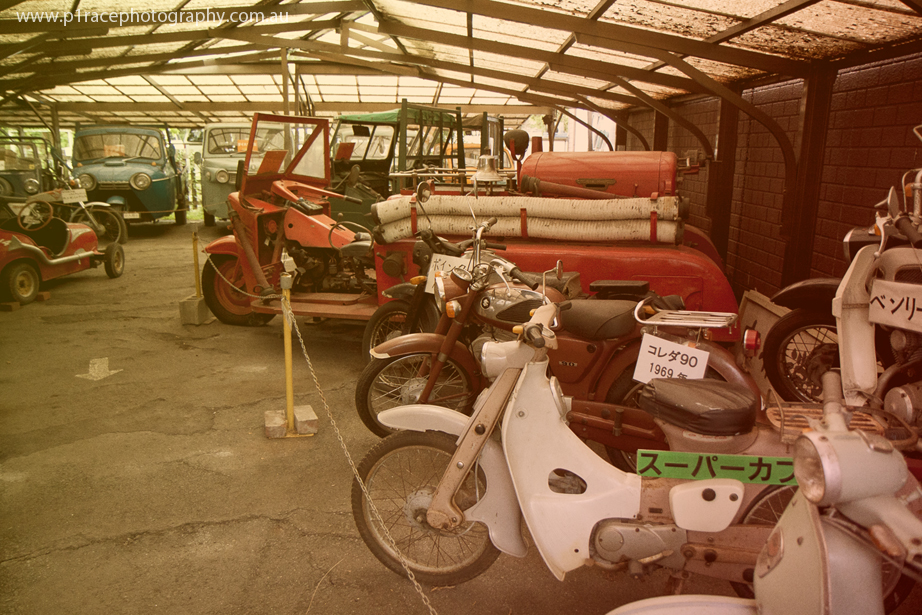
… and even an old Mazda trike fire engine.

I absolutely fell in love with this thing, with its three-panel windscreen almost making it look like a spaceship …
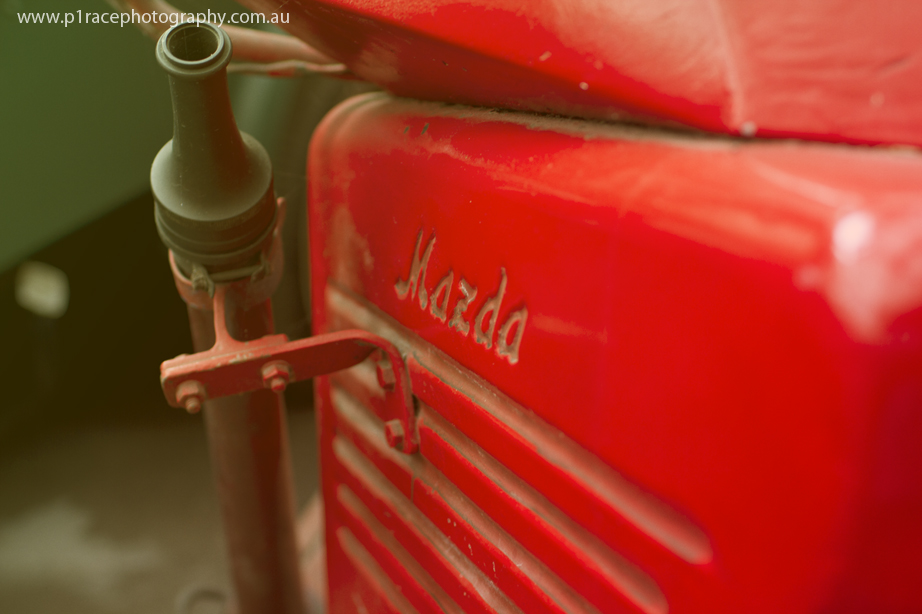
… beautiful detailing …
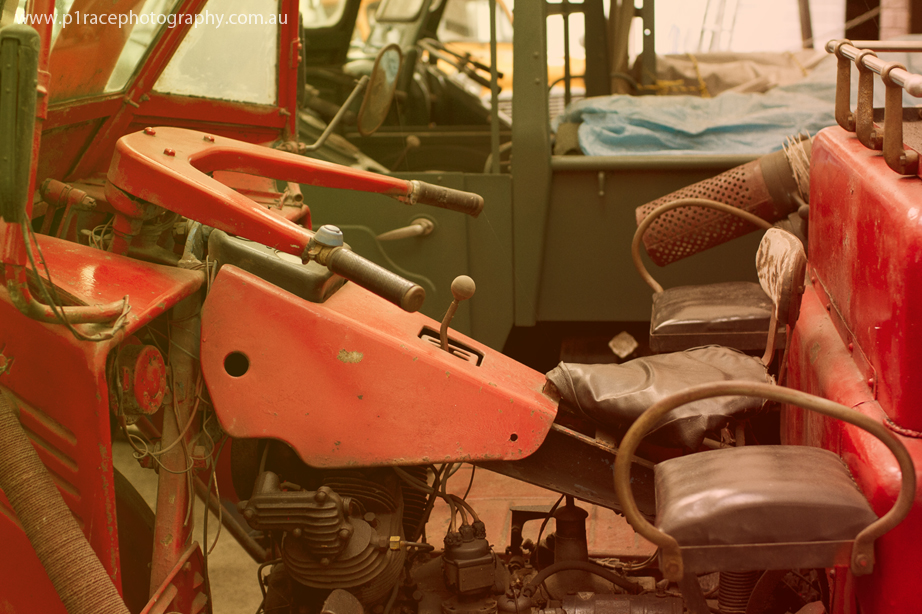
… and brilliant, yet almost laughable three-seat cabin. Can you imagine racing to the scene of a fire sat hanging out of the side of this?
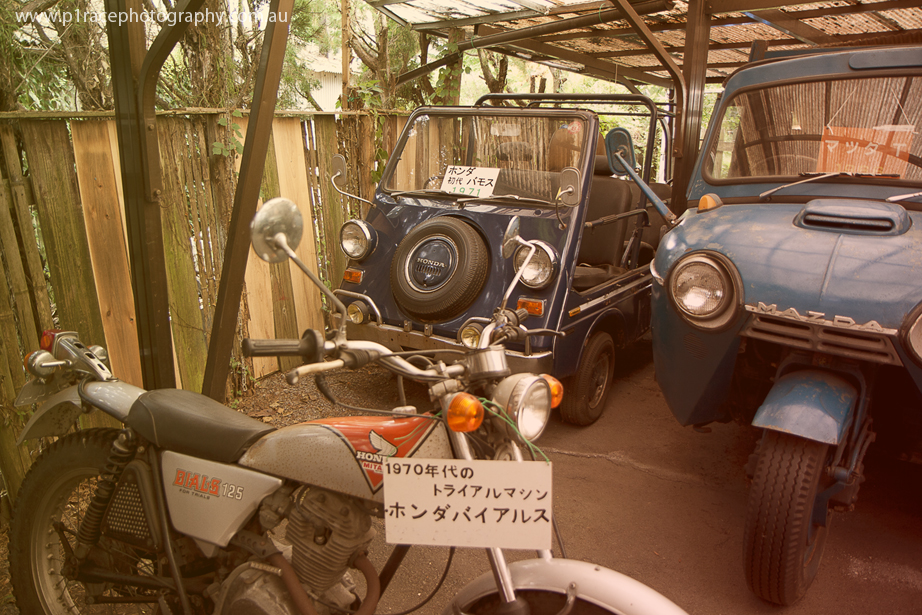
You also had little curios like this original Honda Vamos, which looks rather different to the Vamos of today. Powered by an air-cooled, OHC 354cc twin, only about 2,500 were sold, making this example rather rare, and making it all the more remarkable it sat almost out in the open.
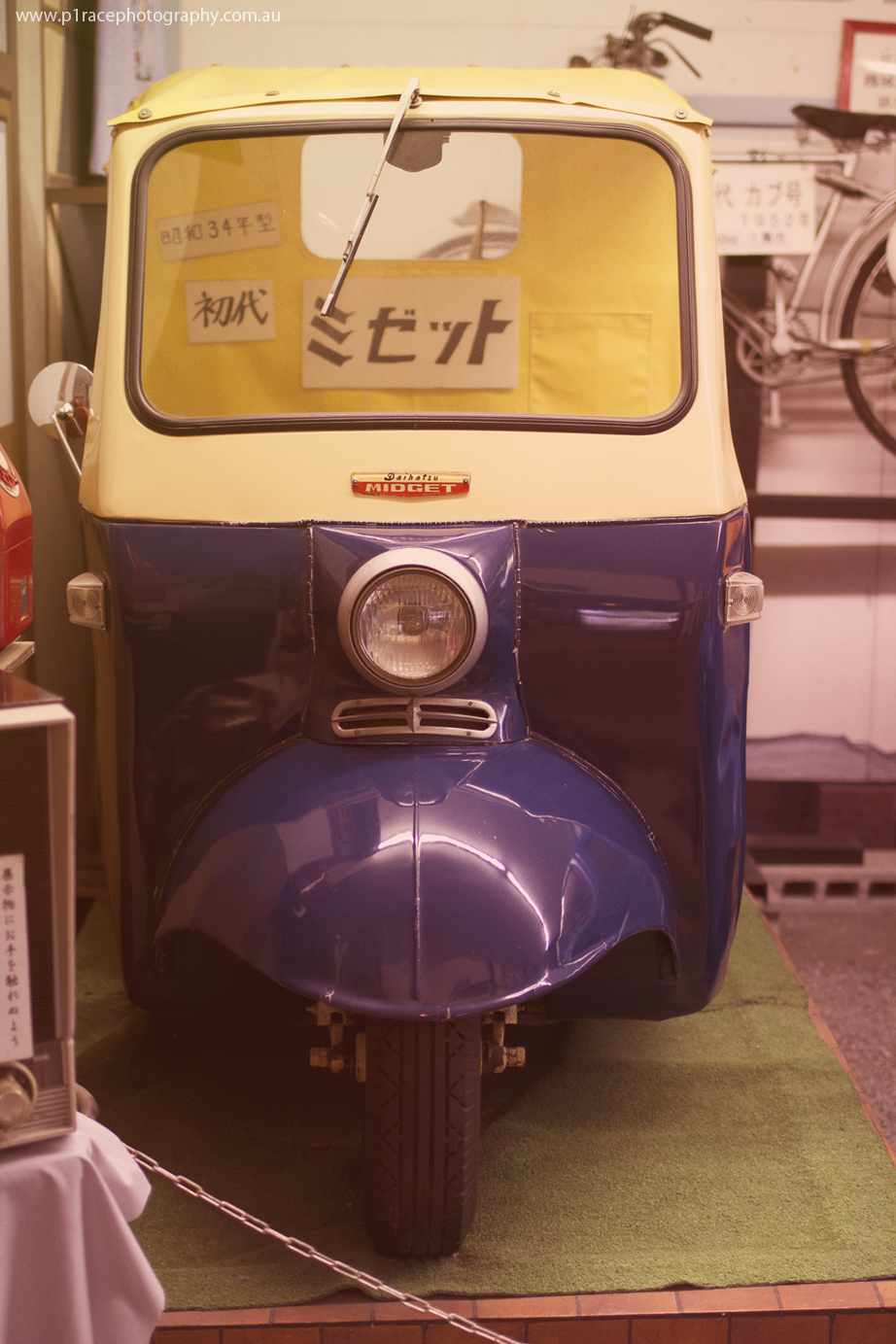
Moving back inside, Mizusawa-san showed me this truly important piece of automotive history – an example of the very first generation of original Daihatsu Midget. Made in 1959, this vehicle is why the slowest car in Gran Turismo, the Daihatsu Midget II, is called the Midget II. I have to say, I did look up why the Midget II was called as such many years ago, but to stand in front of one was truly mind-blowing.
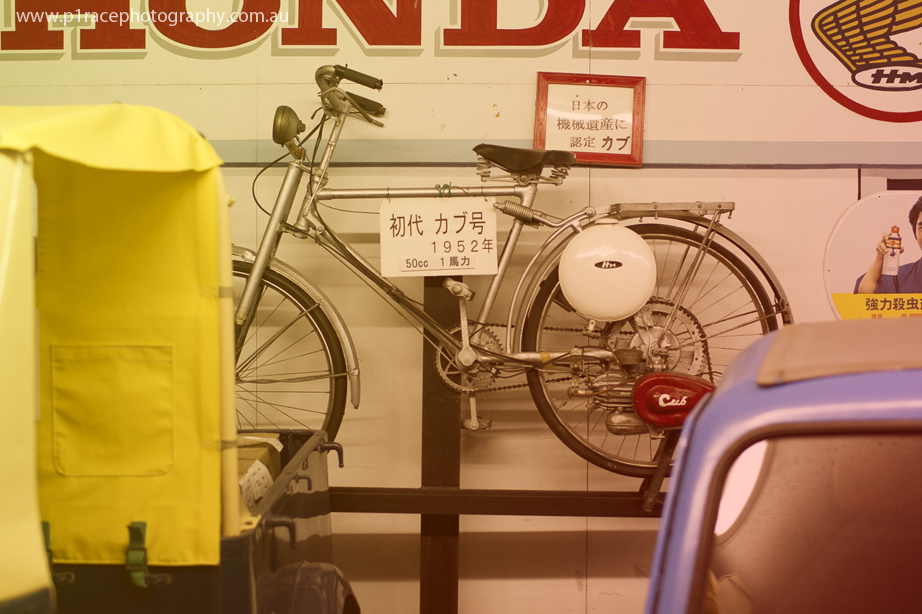
Perhaps even more impressive was this 1952 original Honda Cub on the wall behind it. Not just because it was an example of one of the first Honda motorised bicycles, but because its 50cc 1hp (!) engine truly demonstrated the engineering prowess Honda used to be (and still is, to a certain degree) known for. How? By starting first time, with no fuss, after sitting untouched ever since Mizusawa-san bought it. And given he purchased it thirty years ago, and apparently it hadn’t been touched for decades before that by its prior owner, that’s some effort.
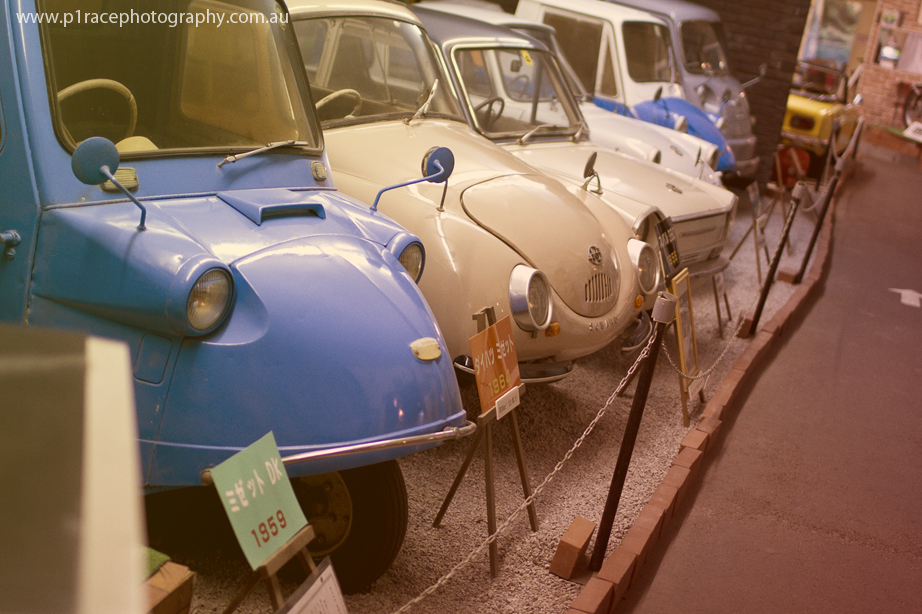
More examples of Japan’s wonderful automotive past sat next to the Cub, too. Showing just how large cars today have become, these mini cars illustrated all that was right about that period of Japan’s motoring past. Tiny, manoeuvrable, yet able (in the case of the Mazda Carol – third down) to fit four people, I really think we need to be looking at cars like this to show us how to have fun again. Definitely with today’s safety levels, but I think there is a market for slimmed down vehicles that make driving fun again.
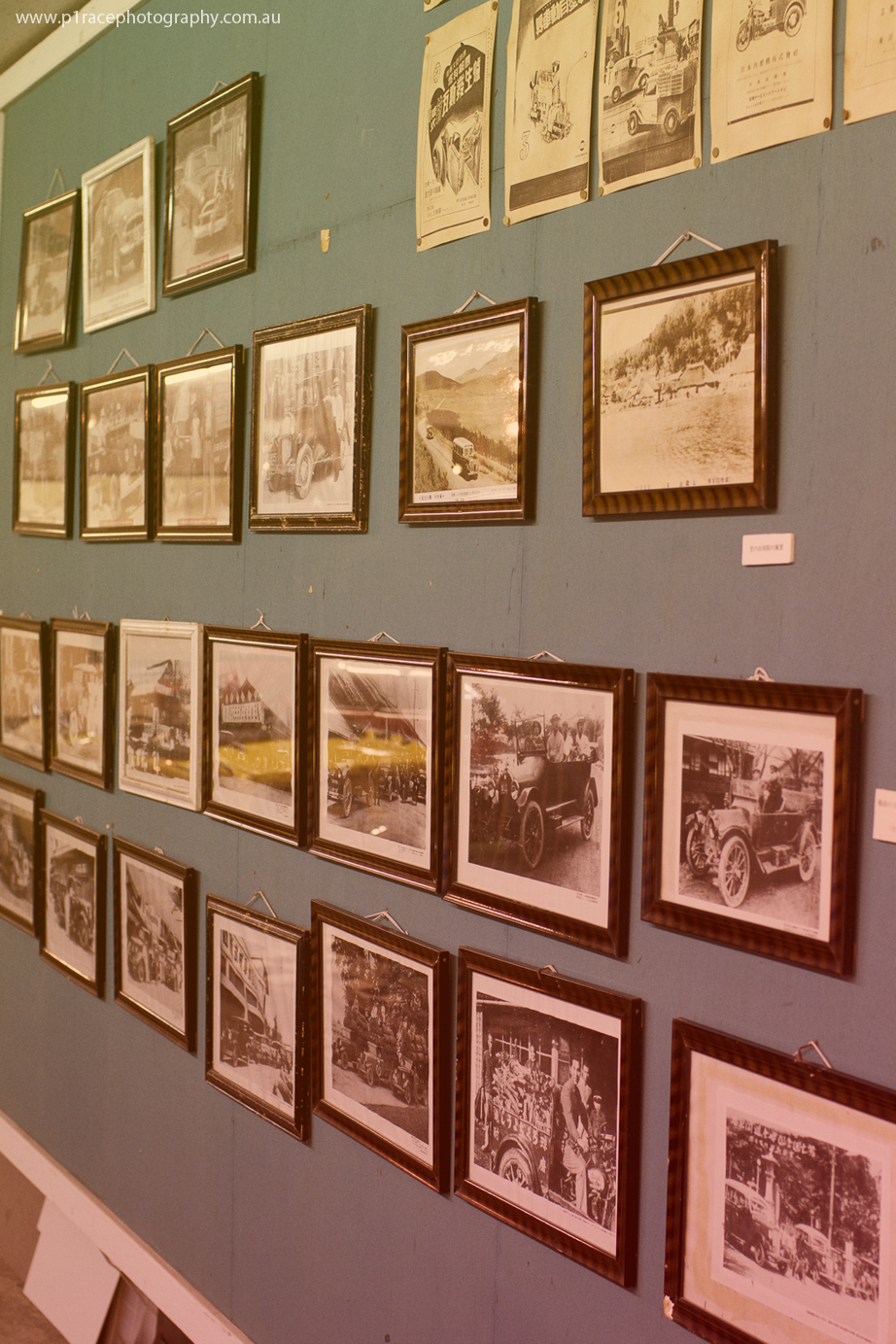
Opposite these tiny wonders lay a wall showing photos from Japan’s motoring past. I have to say it was truly bizarre looking at traditional Japanese landscapes with, for the time, modern cars in front of them, driven by Japanese people in Western suits that were introduced to the country not too many years before that.

Further along the wall, visitors could also look at period advertising material and catalogues, such as this charming one for the Subaru 360 …
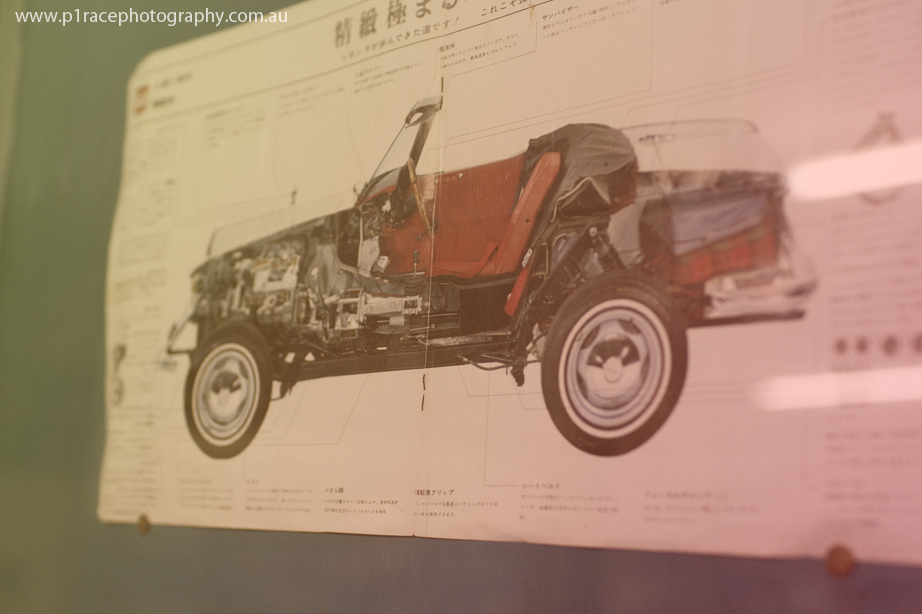
… and a lovely cutaway of the Honda S600.
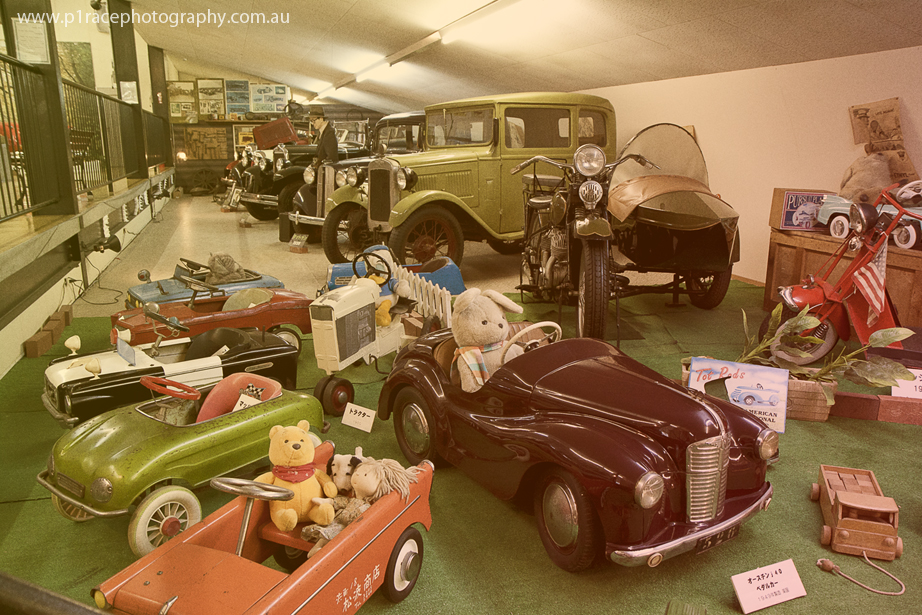
Heading upstairs, you could see Mizusawa-san had assembled a small, but fun collection of various vehicles, both motorised and not. From front to back, you can see a purple 1949 Austin J 40 pedal car, 1931 Austin Seven, 1938 Datsun and a 1930 Fiat.
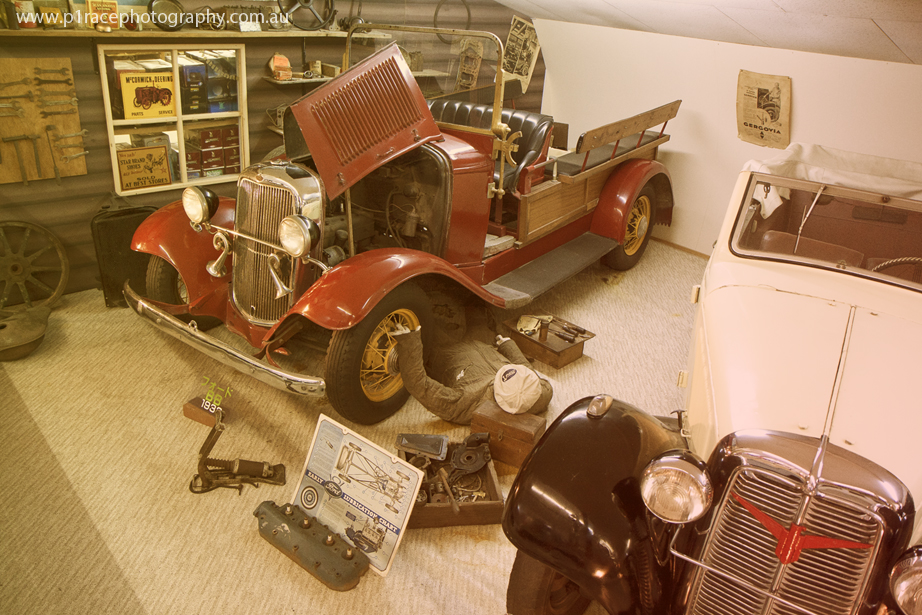
Behind those, visitors could enjoy a diorama of a Ford BB being worked on.
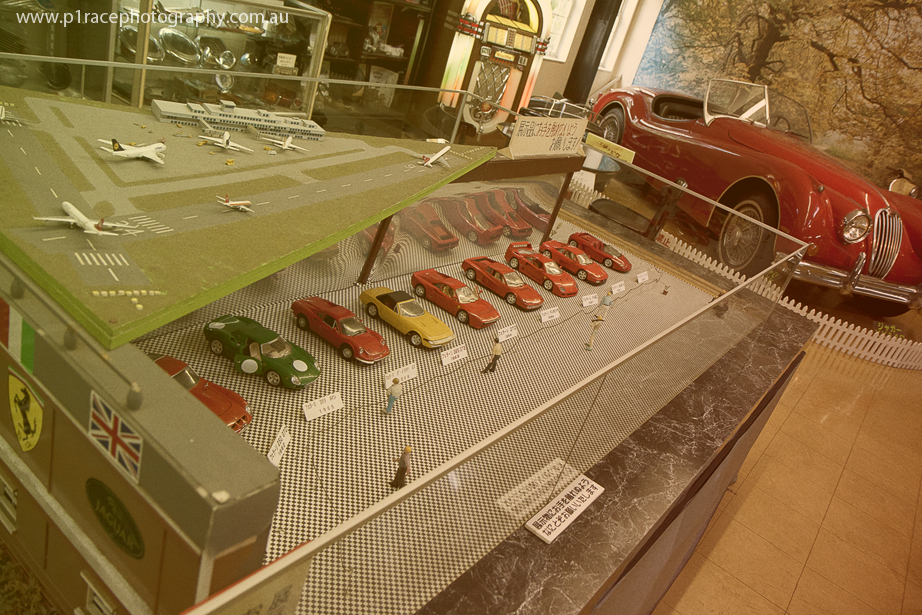
Stepping back, you could see Mizusawa-san had gone to the effort of building two separate dioramas filled with model cars, too. This one contained various Ferraris on one side, with other supercars like the McLaren F1 and BMW Nazca M12 on the other.
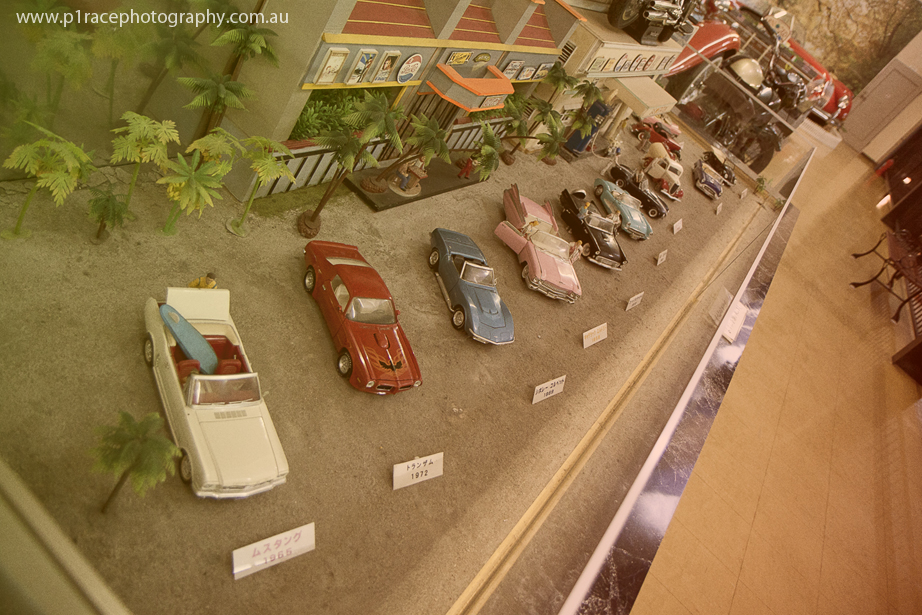
Taking a few steps to your left, you could see the other had been filled with period American metal.
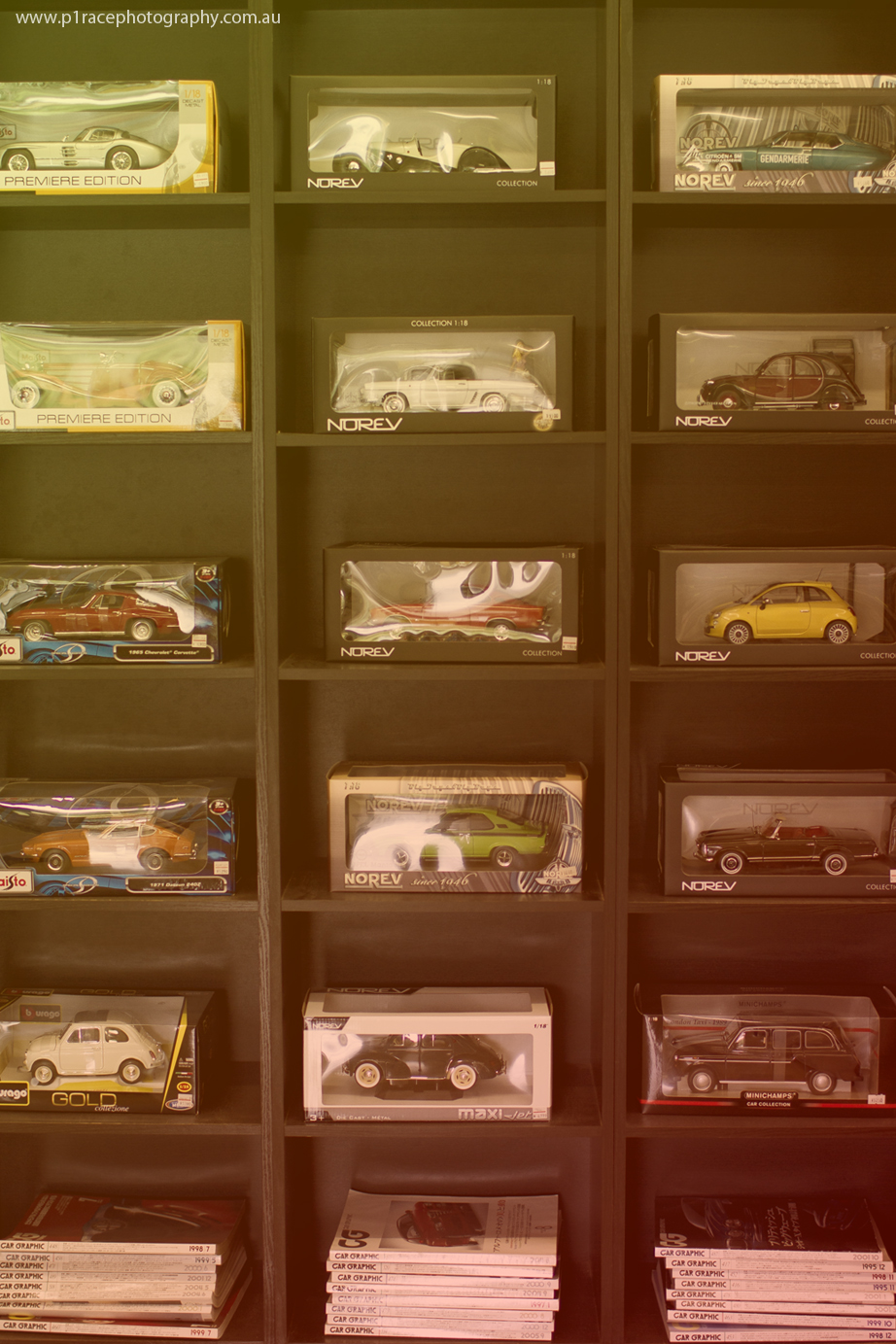
The other side of the upstairs area contained one of the museum’s two gift shops. Why two? Perhaps to store the over 1,000 model cars on sale. This little section was literally just a tiny fraction of the entire wall taken up on one side of the gift shop by models of all kinds.
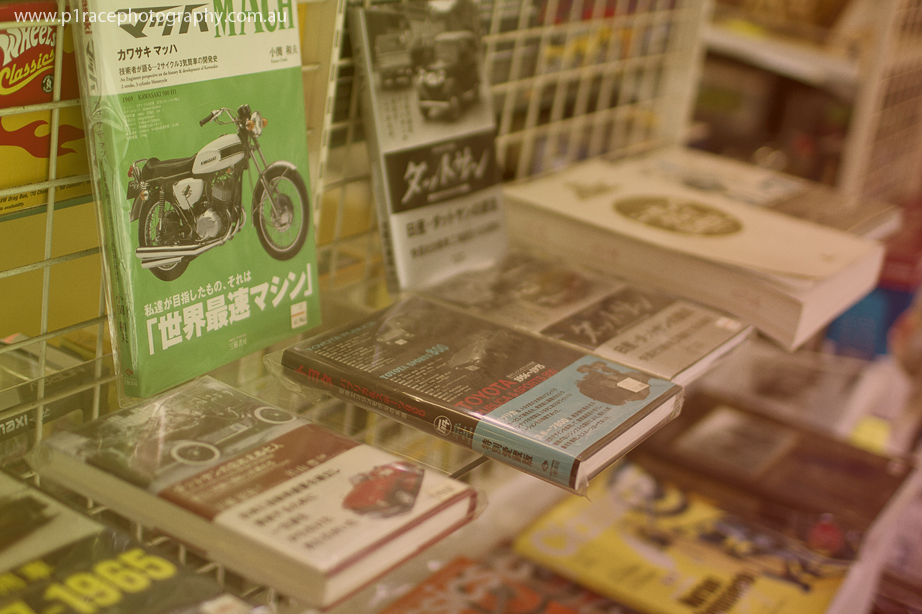
If models weren’t your thing (or were outside your budget), you could always walk away with either a nice hard cover book on some Japanese classics …
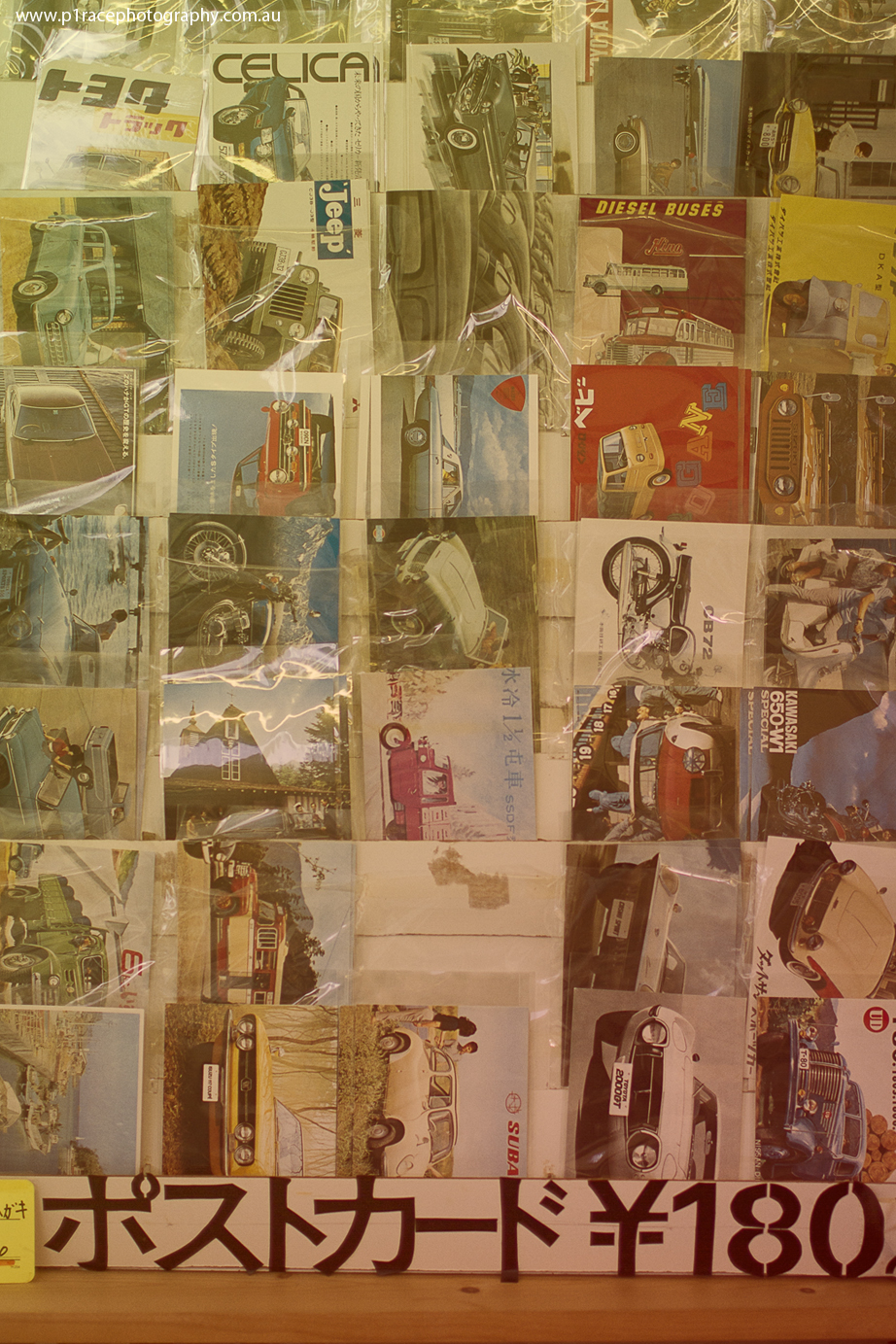
… or a postcard, complete with wonderful period promotional images. These were very affordable at just 180 Yen.

Just to make sure customers could relax, the gift shop also contained a little cafe, which of course meant having a suitable motorbike to display in this gorgeous 1973 CB50 racer.
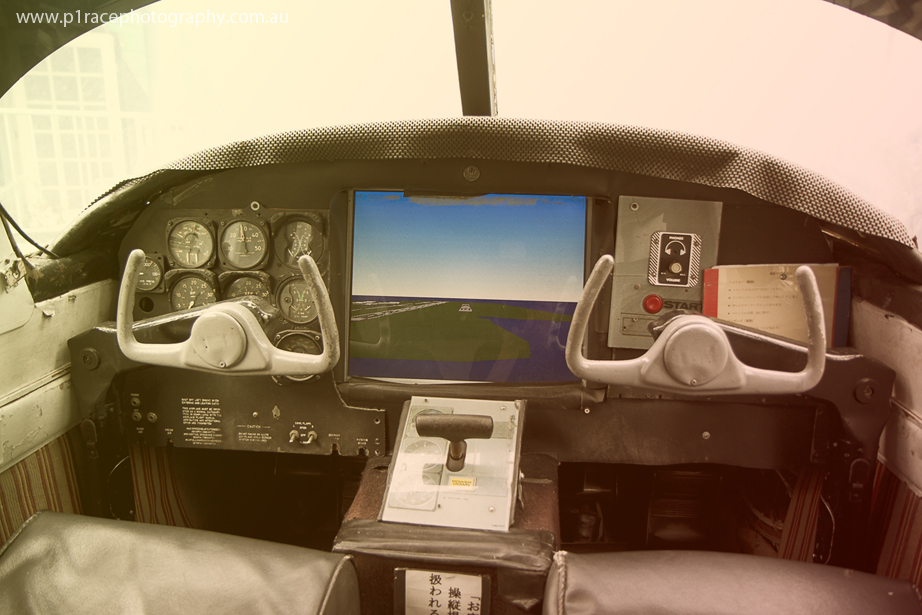
Remember the plane bolted to the balcony you could see as you walked in? The gift shop was the only way to access that, so having had a lovely chat with Mizusawa-san about his collection, I went outside to check it out and poke my head inside.
Rather wonderfully, what greets you is a full, unrestored interior, complete with usable controls that are now connected up to the 90s-era Konami flight simulator game. I had to laugh at the graphics, but I’m sure it’s great fun. Sadly, I didn’t get the chance to try as my ride (a hilariously gutless Mitsubishi EK Wagon driven by one of my girlfriend’s cousins) was waiting in the car park below.

One the way back down, I did stop briefly at the downstairs gift shop, too, to see what they had in stock. Unsurprisingly, more models. These Tomica Limited Vintage ones caught my eye and were rather tempting, but I couldn’t find any cars I truly had to have, so left it alone.

You also had a wall filled with key rings of various brands, in case that was more your thing.
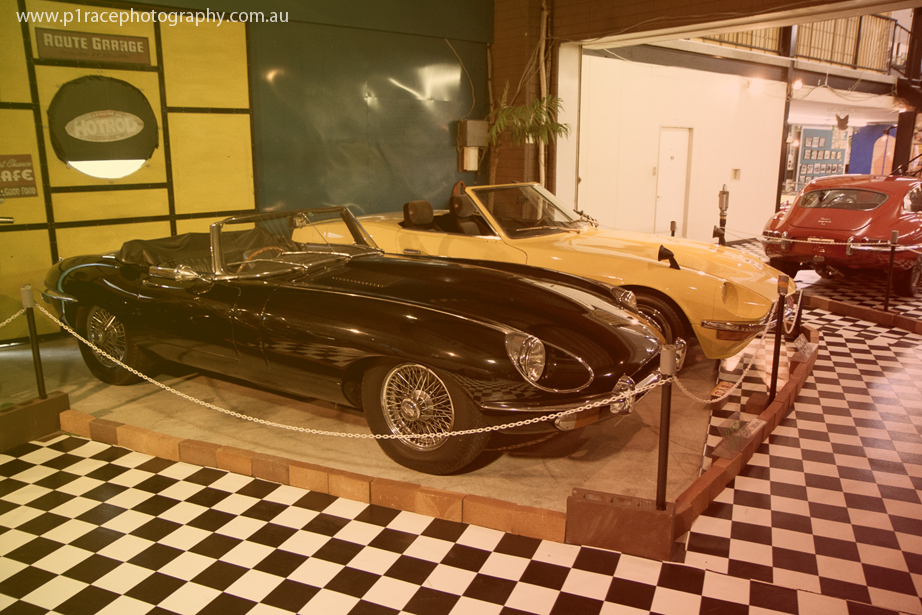
So that was my eclectic journey through one of the most surprising and unique car museums in Japan. It was definitely an eye-opener, and if you’re ever in Kyushu, I’d suggest a little side-trip to Yufuin to relax in the hot springs, enjoy the surrounding countryside, and take a look at this little oddity from the past.

